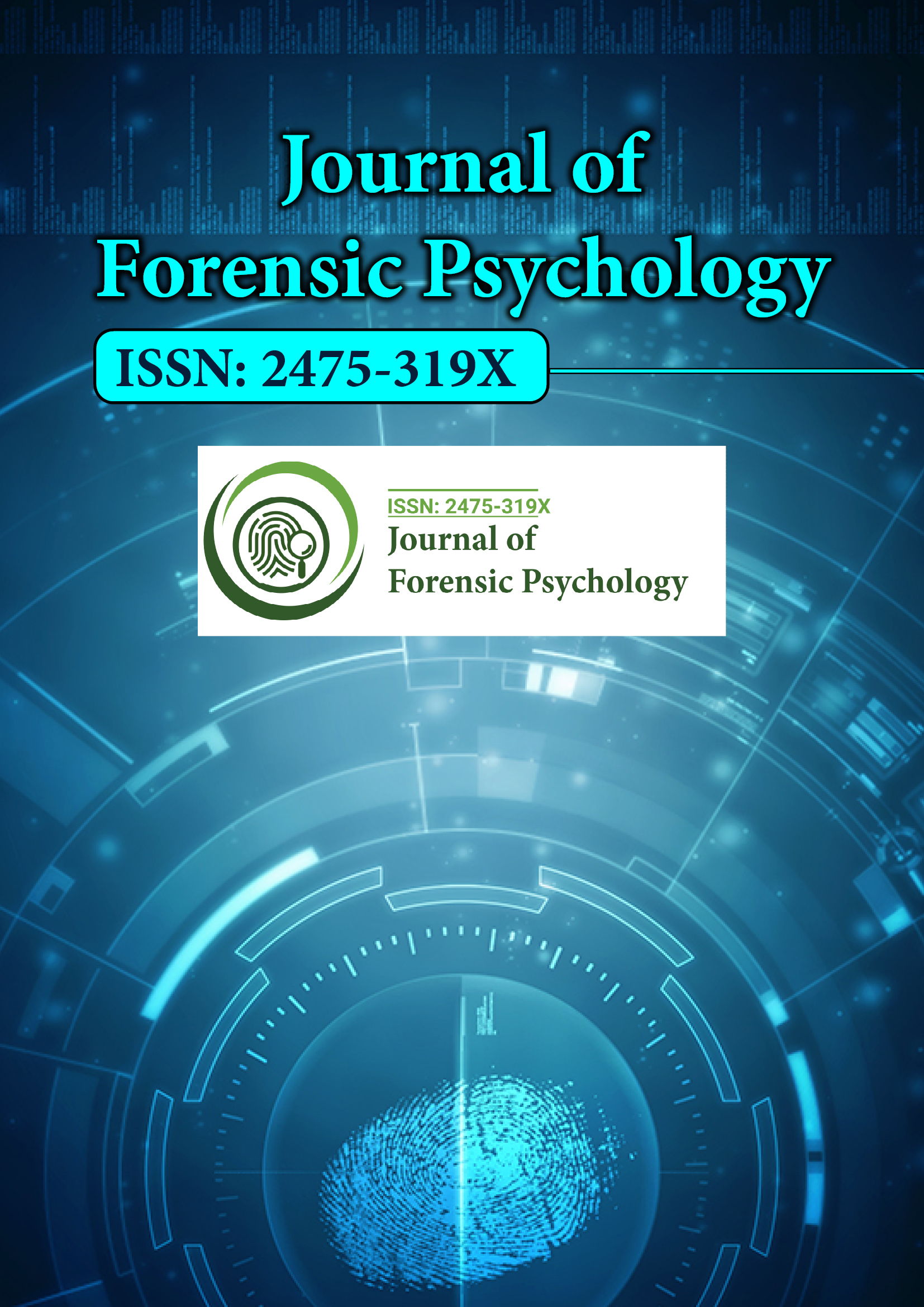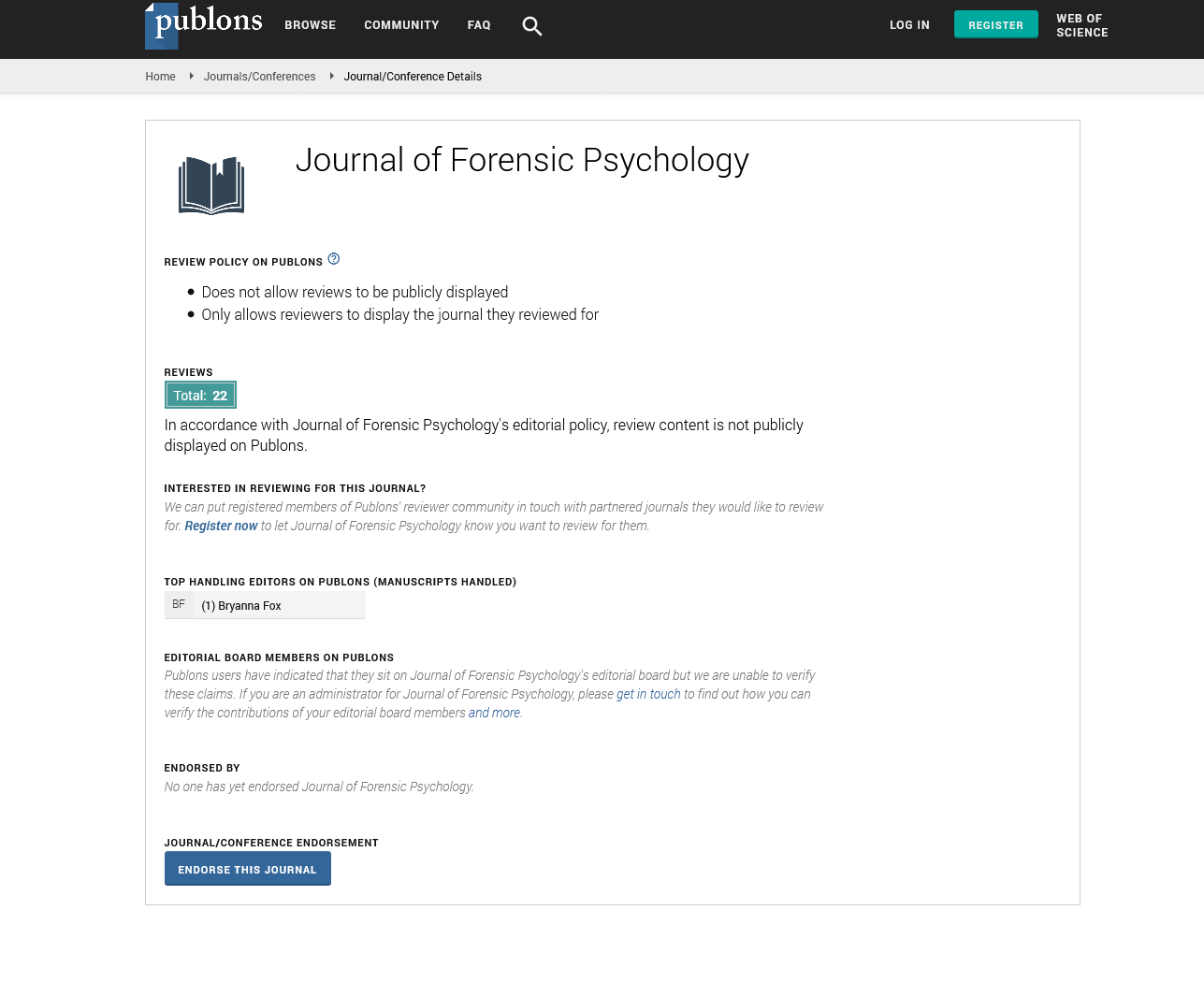Indexed In
- RefSeek
- Hamdard University
- EBSCO A-Z
- Publons
- Geneva Foundation for Medical Education and Research
- Euro Pub
- Google Scholar
Useful Links
Share This Page
Journal Flyer

Open Access Journals
- Agri and Aquaculture
- Biochemistry
- Bioinformatics & Systems Biology
- Business & Management
- Chemistry
- Clinical Sciences
- Engineering
- Food & Nutrition
- General Science
- Genetics & Molecular Biology
- Immunology & Microbiology
- Medical Sciences
- Neuroscience & Psychology
- Nursing & Health Care
- Pharmaceutical Sciences
Commentary - (2024) Volume 9, Issue 1
The Psychology of Paranormal Experiences: Exploring Psychological Illustration
Louis Schlesinger*Received: 03-Feb-2024, Manuscript No. JFPY-24-25062 ; Editor assigned: 05-Feb-2024, Pre QC No. JFPY-24-25062 (PQ); Reviewed: 19-Feb-2024, QC No. JFPY-24-25062; Revised: 26-Feb-2024, Manuscript No. JFPY-24-25062 (R); Published: 04-Mar-2024, DOI: 10.35248/2475-319X.24.9.322
Description
Paranormal activity has long captivated the human imagination, sparking curiosity and intrigue about the existence of unseen forces and entities beyond the realm of conventional understanding. From ghostly apparitions and poltergeist phenomena to inexplicable sightings of unidentified flying objects (UFOs), the world of the paranormal is filled with enigmatic encounters that defy rational explanation. In this article, we delve into the fascinating world of paranormal activity, examining the various phenomena, theories, and scientific perspectives surrounding this elusive phenomenon.
Exploring paranormal phenomena
Paranormal activity encompasses a wide range of unexplained occurrences that challenge our understanding of the natural world. Some of the most commonly reported paranormal phenomena include:
Ghostly apparitions: Ghost sightings and encounters with spirits are among the most prevalent forms of paranormal activity reported worldwide. These apparitions are often described as disembodied entities or residual energy manifestations lingering in specific locations, such as haunted houses, cemeteries, or historic sites.
Poltergeist activity: Poltergeist phenomena involve unexplained disturbances, such as objects moving or levitating, mysterious sounds or voices, and physical manifestations of force without any apparent cause. Poltergeist activity is often associated with heightened emotional states and is believed to be linked to the presence of a troubled or restless spirit.
UFO sightings: Unidentified flying objects, or UFOs, are objects or lights observed in the sky that defy conventional explanation. While many UFO sightings can be attributed to natural phenomena or misidentifications of man-made aircraft, some encounters remain unexplained and have fueled speculation about extra-terrestrial visitations.
Psychic phenomena: Psychic abilities, such as telepathy, clairvoyance, and precognition, are often cited as evidence of paranormal activity. Individuals claiming psychic powers purport to possess the ability to perceive information beyond the ordinary senses or to communicate with the spirits of the deceased.
Theories and explanations
Numerous theories have been proposed to explain paranormal phenomena, ranging from supernatural explanations to scientific hypotheses rooted in psychology, physics, and neuroscience. Some of the most prominent theories include:
Spiritual and supernatural beliefs: Many cultures and religious traditions attribute paranormal phenomena to the influence of spirits, demons, or other supernatural entities. These beliefs often centre on the existence of an afterlife or spiritual realm beyond the physical world.
Psychological explanations: Psychologists and sceptics suggest that many paranormal experiences can be attributed to psychological factors, such as suggestibility, hallucinations, or perceptual distortions. They argue that the human mind is prone to create illusions and interpreting ambiguous stimuli as paranormal phenomena.
Quantum mechanics: Some proponents of the paranormal invoke principles of quantum mechanics to explain phenomena such as telepathy or psychokinesis. They speculate that consciousness may play a fundamental role in shaping reality and that paranormal abilities could be manifestations of quantum- level phenomena.
Misinterpretations and hoaxes: Skeptics of the paranormal argue that many reported encounters can be attributed to misinterpretations of natural phenomena, hoaxes perpetrated for attention or profit, or the power of suggestion and collective belief in supernatural explanations.
Scientific perspectives
From a scientific standpoint, paranormal phenomena remain a subject of skepticism and controversy due to the lack of empirical evidence and reproducible experiments. While some researchers conduct investigations into anomalous experiences using rigorous scientific methods, the majority of mainstream science dismisses paranormal claims as pseudoscience or superstition.
Conclusion
Paranormal activity continues to intrigue and perplex us, challenging our beliefs about the nature of reality and the limits of human perception. Whether viewed through a lens of skepticism, spirituality, or scientific inquiry, the mysteries of the paranormal remind us of the boundless complexity of the universe and the enduring allure of the unknown. As we continue to explore the realms of consciousness, psychology, and physics, perhaps one day we will unravel the secrets behind these elusive phenomena and gain a deeper understanding of the mysteries that lie beyond the veil of ordinary perception.
Citation: Schlesinger L (2024) The Psychology of Paranormal Experiences: Exploring Psychological Illustration. J Foren Psy. 9:322.
Copyright: © 2024 Schlesinger L. This is an open-access article distributed under the terms of the Creative Commons Attribution License, which permits unrestricted use, distribution, and reproduction in any medium, provided the original author and source are credited.

